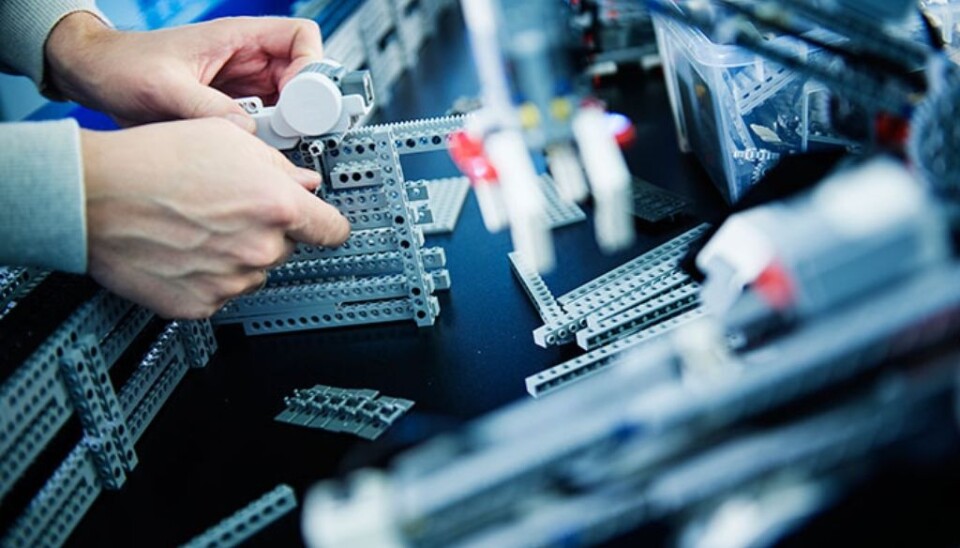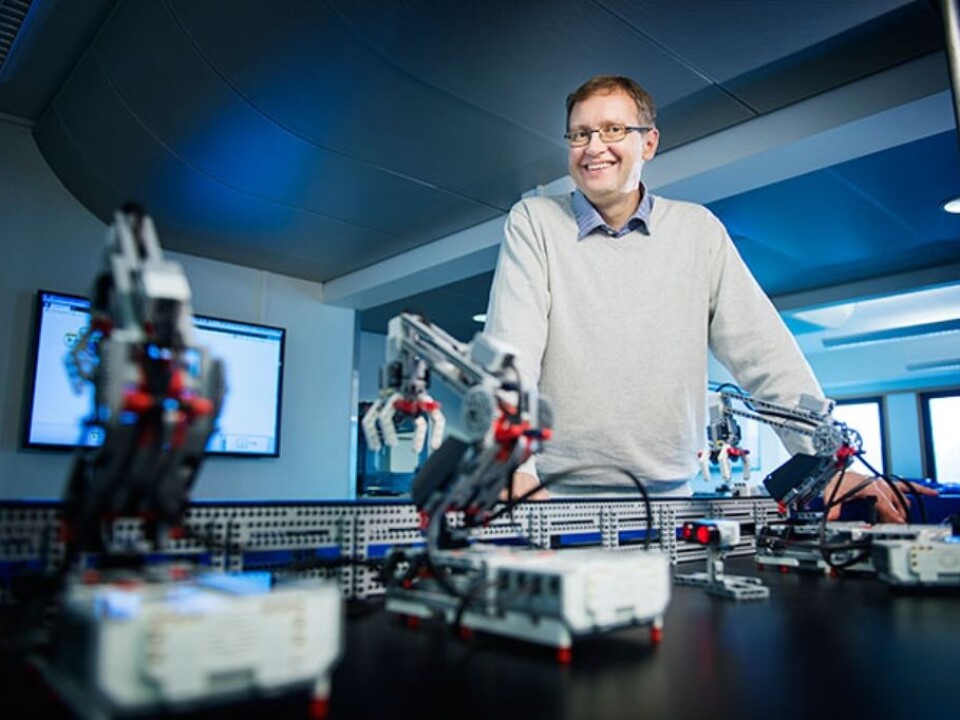This article was produced and financed by Oslo Metropolitan University

Using Lego to learn about machines
Building sets and toys help pupils taking vocational programmes about technological and industrial processes. Pupils can now simulate entire production plants with the help of Lego.
Denne artikkelen er over ti år gammel og kan inneholde utdatert informasjon.
Companies' use of increasingly advanced and automated equipment makes it difficult for upper secondary schools to keep up due to the cost of buying such equipment, the physical space required, and the need to keep teachers updated.
Programmable robots based on Lego or similar solutions now make it possible to create small-scale simulated models – at a manageable cost for school budgets.
"The pupils can work on assignments and concrete problems taken from local companies with the help of a technology which is principally the same as the one they will meet in their future jobs," says Birger Brevik at Oslo and Akershus University College of Applied Sciences.
Brevik recently defended his thesis on how electrical engineering teachers' use Lego Mindstorms as an educational tool in upper secondary education. He believes that informed use of this type of educational tool can help strengthen professional relevance and thereby pupil motivation. This will in turn have a significant impact on the number of pupils who complete their vocational education rather than drop out.

Brevik concentrated on the challenges associated with teaching electrical engineering as a subject in upper secondary education. His own background is from this field: he has a craft certificate, professional practice, and experience as a vocational teacher.
Positive response from teachers
Brevik's PhD thesis consisted of a study with interviews and participant observation of a sample of teachers in electronic engineering at different upper secondary schools between 2007 and 2010.
Some of the teachers were already familiar with the educational tool, while others were introduced to it in connection with Brevik's project.
The study made several interesting findings:

• Current cooperation between schools and companies consists more of work placements for pupils undertaking practical training and less with technical issues and problems related to professional practice and production.
• The teachers would like to see more technical cooperation, both with companies and with other schools.
• The teachers find Lego Mindstorms useful for simulation of technological processes when these are inspired by corresponding processes in companies.
• Different groups of teachers chose different strategies for how their pupils should work on simulated facilities, from giving them completely free rein in deciding what should be constructed and how, to defining the assignments and the final result.
• Many teachers were positive to the Lego-based educational tool and the associated teaching strategies as a way of promoting creativity and motivation among pupils.
• The project entitled "Prosjekt til fordypning" (In-depth Study), which was introduced in vocational educational programmes in 2006, appears to be well suited to building production facilities for and testing technological processes in schools.
Covers the curriculum
The curriculum for electrical engineering states that pupils must be able to execute and document different types of technological systems, meaning technological processes such as assembling, programming, and commissioning technological systems. This, it states, is how electrical enginnering in schools can be made vocationally oriented.
The technological systems referred to in the curriculum are namely the ones which pupils will meet when they enter employment. For example, there may be different types of machinery and apparatus associated with processes in a production line where different components are expected to be programmed to perform specific operations on a finished product.
"These operations can also be done in a down-scaled version of Lego or a corresponding system. The necessary programming units and sensors resemble those found in industry," says Brevik.
"Since the construction of a machine or apparatus is a brick-based quick fix, it creates a wide range of opportunities."
Brevik believes that the educational tool creates a form of ‘open-ended teaching’ where there are no precise answers and where the role of the teacher is more of a facilitator and supervisor of assignments that can be resolved in multiple ways.
Has direct relevance
Lego Mindstorms has been used as an educational tool in vocational education for several years. However, Brevik is the first to conduct a scientific study of how the tool is actually used.
The idea now is that teachers of vocational subjects in technological and industrial processes should be able to learn more about it and about how it can be used in teaching situations.
In a large room in HiOA's Kjeller Campus, Brevik and his colleagues are about to install a technological laboratory for building and testing simulated industrial processes.
------------
Read the Norwegian version of this article at forskning.no


































